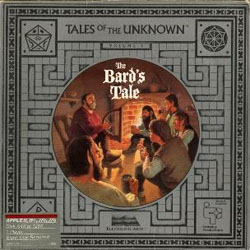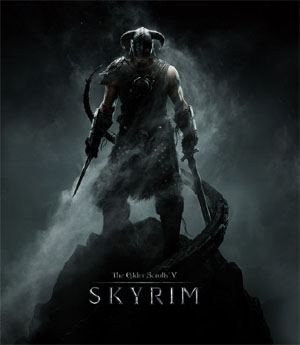 I am going to quote something at length from the CRPG Addict because I think it’s important:
I am going to quote something at length from the CRPG Addict because I think it’s important:
The problem [in The Bard’s Tale] is, it costs a lot to resurrect a dead character, especially a high-level dead character. Resurrecting six dead characters cost way more than I had at this point. I had to create a dummy character just to exit the Guild. I was able to resurrect one character immediately, but to get the other five, I had to build up my savings. It took a good three hours before they were all happy and healthy again.
It sounds horrible, especially to modern gamers, but I actually really, really like this aspect of The Bard’s Tale. Death isn’t a game-killer the way it is in Wizardry, but boy does it have consequences. Since you can only save in the Guild of Adventurers, every dungeon foray is a risk, creating a palpable tension as you wander your way through the passages. And every once in a while, you stumble into an encounter like this one (there were actually two more on this same level, with a dragon and a high-powered wizard) that makes your stomach drop and an expletive escape your lips.
Modern games make it far too easy. In something like Baldur’s Gate, you would save every five or ten minutes. If you stumble on to a soul sucker, you might treat the first battle against him like a test run. If your characters die–or, heck, even just lose more hit points than you want to spare–no problem. Just reload and run the encounter again with the experience at your back…
Because of the frequent save points, modern games depend on the difficulty of individual battles to make the games challenging. In The Bard’s Tale, Wizardry, and other games of the era I’m playing, there are plenty of difficult individual battles, but it’s the totality of the expedition that brings the difficulty. You must constantly strategize. How much gold do I need to get from this encounter to make the “trap zap” spell worthwhile? What should I set as my bottom hit point threshold before I return to the surface? Do I want to expend 15 spell points on this group of wights, or take the risk that they’ll turn me into a crippling old man with one touch? I’ve only got 15 squares left to map on this level, but my characters only have 1/2 their hit points. Should I press on or go back?
Exhilarating. Fortunately, I have a lot of games like this left to play.
In computer games, this is a trend which extends beyond CRPGs. In FPS games, for example, Halo ushered in the era of rechargeable shields/stamina and ending an era in which players shepherded health packs and treated entire missions as strategic challenges (instead of a string of tactical encounters).
If this sounds familiar, it should. Tabletop RPGs have been embracing the same trends, starting with a My Precious Encounter(TM) design ethos for published adventures and then hard-coding that design ethos into the game system.
Allow me to emphasize this one last time with two key pull quotes:
Modern games depend on the difficulty of individual battles to make the games challenging.
In [older games] there are plenty of difficult individual battles, but it’s the totality of the expedition that brings the difficulty.
Obviously this is a design ethos which has been most strongly championed by WotC in the 4th Edition of D&D (and then pushed even farther in D&D Gamma World). But it can be seen cropping up in a lot of places.
The argument can, of course, be made that this tactical focus is “more fun”: You’ll never end up trapped in the lower levels of the dungeon (nor will you figure out a clever way to escape). You’ll never find yourself desperately low on health (nor feel the exhilaration of overcoming the cyber-demon between you and the next health pack). You’ll never need to make a tough choice about whether to use your spells now or later (nor experience the satisfaction of blowing away an opponent with your well-earned stockpile of powerful enchantments).
But, ultimately, I think there’s a reason why we refer to “strategy and tactics” as a matched pair: They go together hand-in-hand. They complement each other. They improve each other. Strategic decisions shape (and re-shape) the immediacy of tactical play, naturally resulting in varied and disparate tactical challenges that must be overcome.
Of course, there will still be a great deal of variance in My Precious Encounters(TM) scenario design. (That is, after all, the “precious” part of carefully crafting your “perfect” encounters.) But in my experience, the result still feels curiously bland. Maybe in this encounter you’re fighting a couple of big brutes and in the next encounter you’re surrounded by grunts. But the encounters still all seem to follow the same basic trajectory.
This is probably unsurprising, of course: By removing the strategic portion of the game, you’ve gutted a huge chunk of meaningful choice and consequence. In other words, you’ve crippled the gameplay.
 From At Home: A Short History of Private Life by Bill Bryson:
From At Home: A Short History of Private Life by Bill Bryson:












